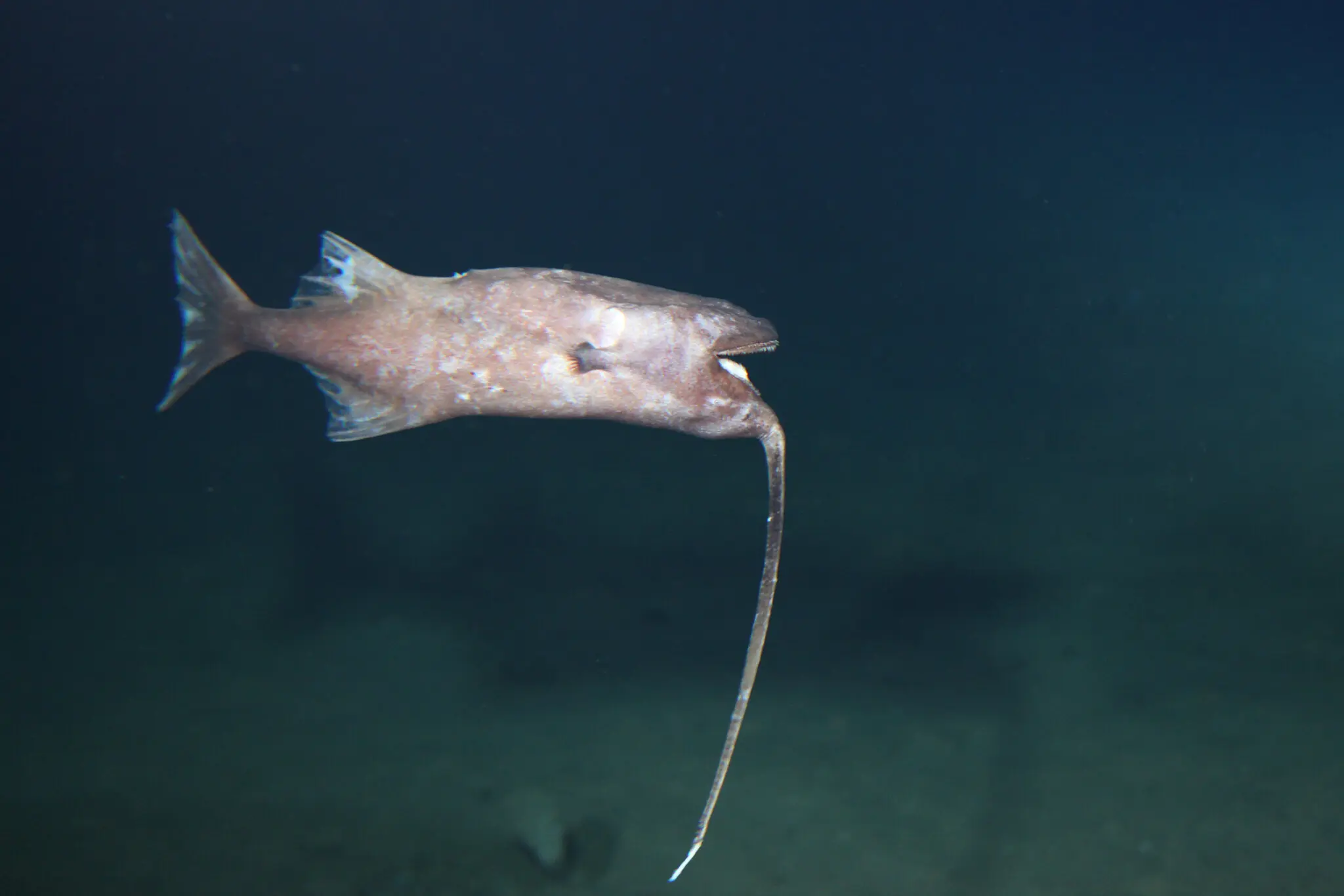In a revelation that adds another layer to the mysterious world of deep-sea creatures, scientists have discovered that some anglerfish species, specifically the whipnose anglerfish, prefer to live their entire lives swimming upside down. The findings, documented in the Journal of Fish Biology, highlight the unique behavior of these nightmarish deep-sea inhabitants.
The whipnose anglerfish, characterized by a fishing rod-like appendage on its face, defies expectations by choosing an inverted orientation. While previous assumptions suggested that these creatures would dangle their lures in front of their faces, recent underwater videos from the Atlantic, Pacific, and Indian Oceans reveal a different reality. The whipnose anglerfish, despite its small size, swims belly up, with its long lure extending toward the seafloor.

The discovery overturns a century-old belief about the anglerfish’s behavior. Previously, scientists anticipated that these fish would position their lures in front of them. However, footage from remote subs and crewed vehicles captures whipnose anglerfish gliding upside down, challenging conventional wisdom.
Notably, this unusual orientation might serve a strategic purpose. By keeping their lures farther from their mouths, whipnose anglerfish potentially enhance their ability to capture larger and faster prey without the risk of self-biting. The unique behavior was observed in various locations, including the Izu-Ogasawara Trench off Japan.
This revelation emphasizes the significance of technological advancements, particularly remotely operated vehicles (R.O.V.s), in deep-sea biology. Unlike earlier methods that relied on damaged specimens brought up by trawling nets, R.O.V. footage provides unprecedented insights into the natural behaviors of deep-sea creatures. The discovery challenges preconceived notions and adds a fascinating chapter to the evolutionary adaptations of these enigmatic fish.
Image/Source: NewYorkTimes





